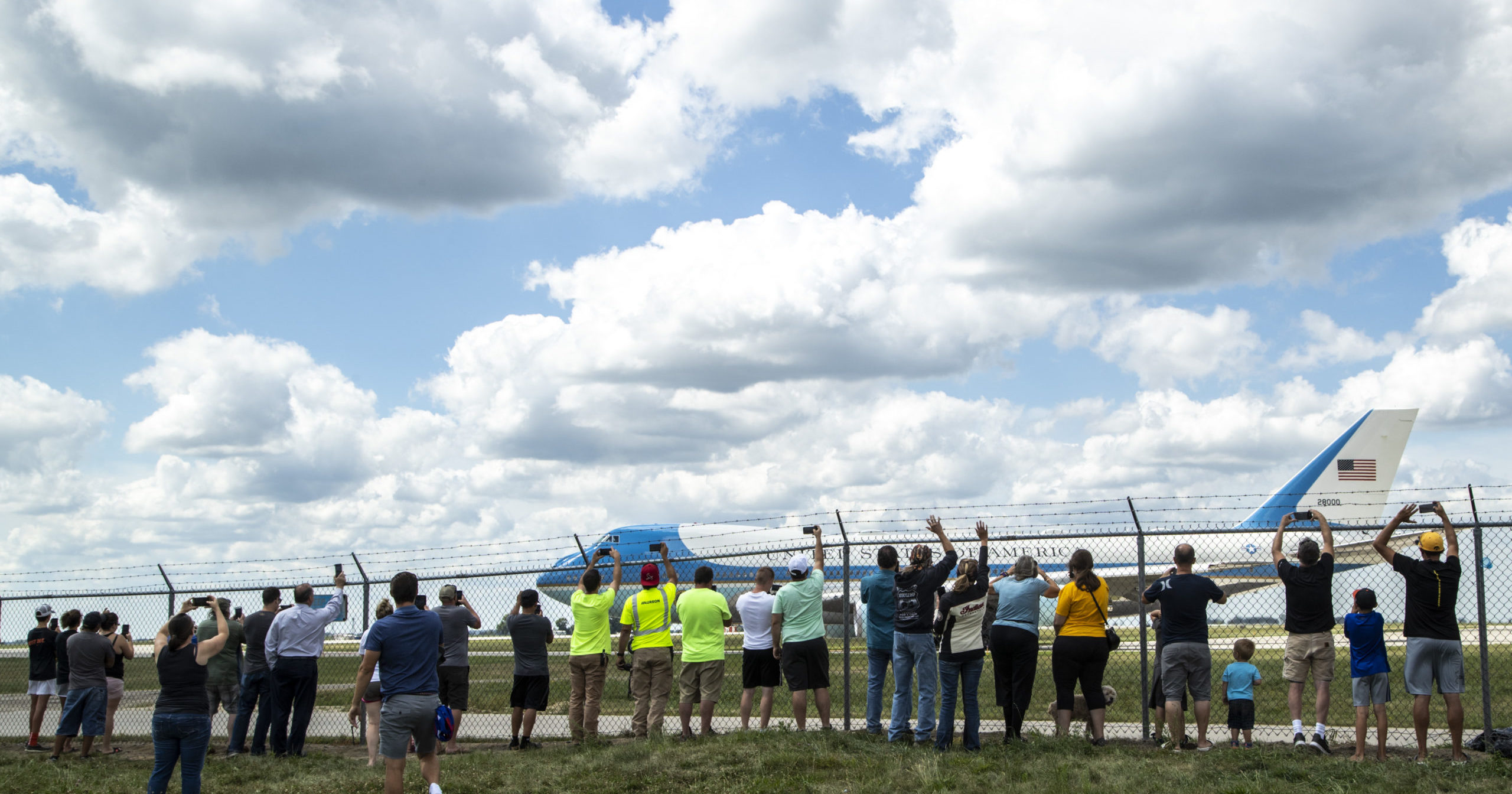
'We'll Get It Done': Trump Answers the Call After Brutal Midwest Windstorm
Kim Reem recounted Tuesday how the unusually powerful storm that tore through Iowa last week destroyed her Cedar Rapids home and tore down more than 100 large trees on her property.
During a briefing at the airport in Iowa’s second-largest city, Reem, who heads a local homeless shelter, told President Donald Trump that it would cost roughly a quarter of a million dollars to clear the trees from her land because that damage wasn’t covered by insurance.
Reem said the people staying at her Mission of Hope shelter are “hungry for compassion from our leaders. Just to know our leaders care.”
“We’re strong and resilient, but Mr. President, we are tired and we need your help,” she said.
Eight days after the storm — a rare derecho — ripped through the state with hurricane-strength winds, thousands are still picking through the pieces of broken homes and hauling fallen trees and other debris from their properties.
About 40,000 residents still don’t have power, and a group of African refugees was living in tents outside of their decimated apartment building, initially refusing to leave despite the pleas of human services workers.
Cedar Rapids, in eastern Iowa, was hardest hit and drew the attention of Trump, who promised to approve a request for $180 million in aid for damaged homes and infrastructure in the state.
He also promised additional funding for farmers.
During the Tuesday briefing, local officials and homeowners spoke of the devastation to their communities, including Marion Mayor Nick AbouAssaly, who said up to 95 percent of the homes and businesses in his city of 40,000 were damaged.
On Monday, Trump signed a portion of Republican Gov. Kim Reynolds’ disaster relief request that covers extensive debris removal and repairs to public buildings, streets and bridges in 16 counties. That portion of the request totaled about $45 million.
The Federal Emergency Management Agency, however, is still assessing the governor’s individual assistance request, which includes $100 million in damage to private utilities and $82.7 million in damage to homes, according to early state estimates.
In additional, farmers sustained an estimated $2.7 billion in damage to crops, grain storage and buildings, which would likely be covered under various U.S. Department of Agriculture programs.
Cedar Rapids Mayor Brad Hart told Trump the individual portion is important to help homeowners remove trees, which in many cases will cost thousands of dollars and isn’t covered by insurance.
He said an estimated 60,000 homes in Cedar Rapids have some degree of damage.
“Adding the individual assistance component to the disaster declaration would really help so many people get those trees out of their yards and not have such a financial burden to them,” he said.
Trump assured Reynolds and others that he would get the individual aid approved.
“We’ll get it taken care of. We’ll get it done very quickly,” he said.
Concerns have been raised that the nation hasn’t understood the extent of the storm, which Reynolds described as “basically a 40-mile-wide tornado with 112 mph winds.”
The National Weather Service said the derecho packed intermittent wind in eastern Iowa in the 110-130 mph range. That would be the strength of an F2 tornado.
“The rest of the country is starting to take note, and so we’re getting volunteers and help from around the country, and that’s really important,” Hart said.
The Western Journal has reviewed this Associated Press story and may have altered it prior to publication to ensure that it meets our editorial standards.
Truth and Accuracy
We are committed to truth and accuracy in all of our journalism. Read our editorial standards.
Advertise with The Western Journal and reach millions of highly engaged readers, while supporting our work. Advertise Today.












